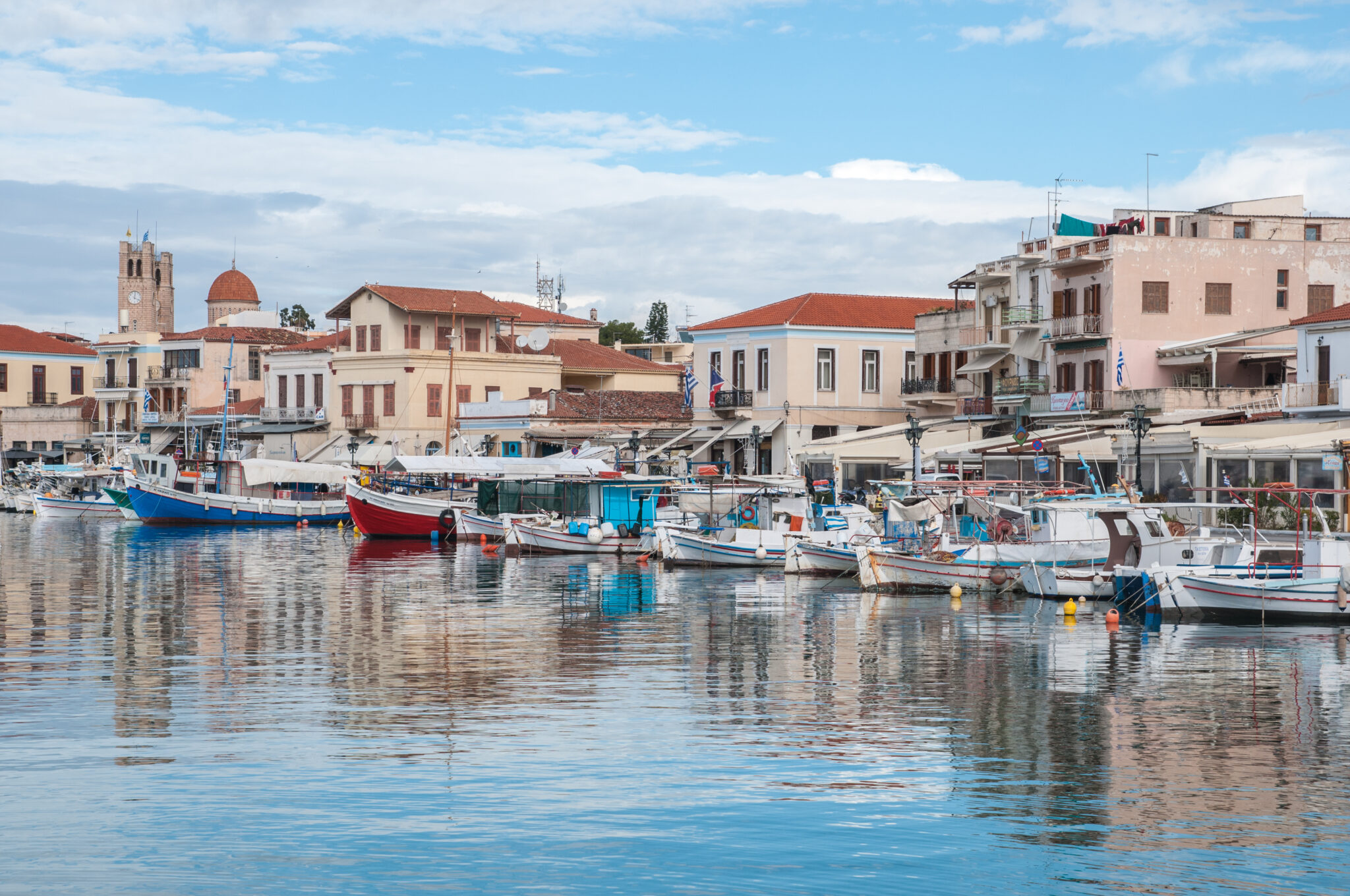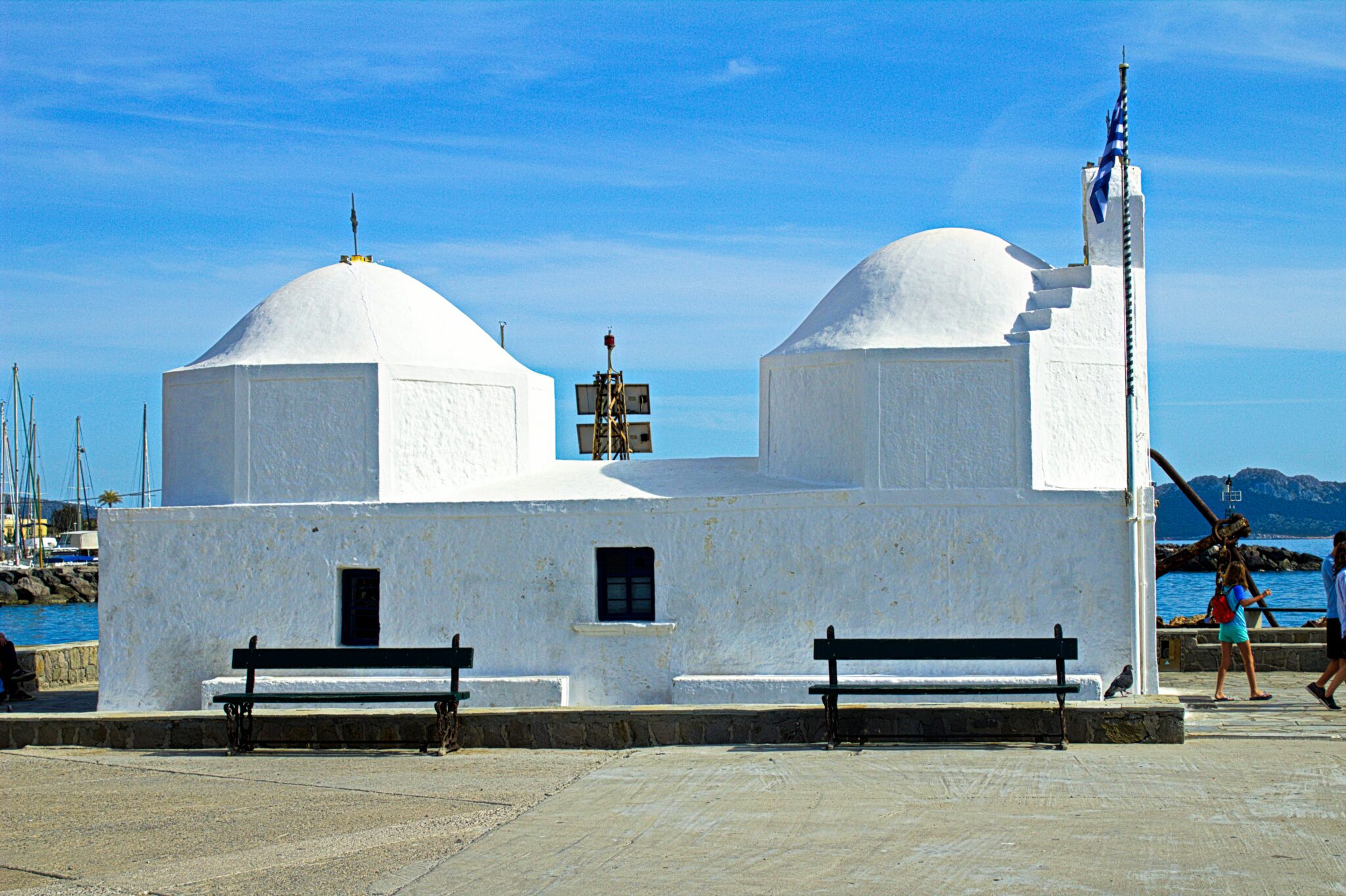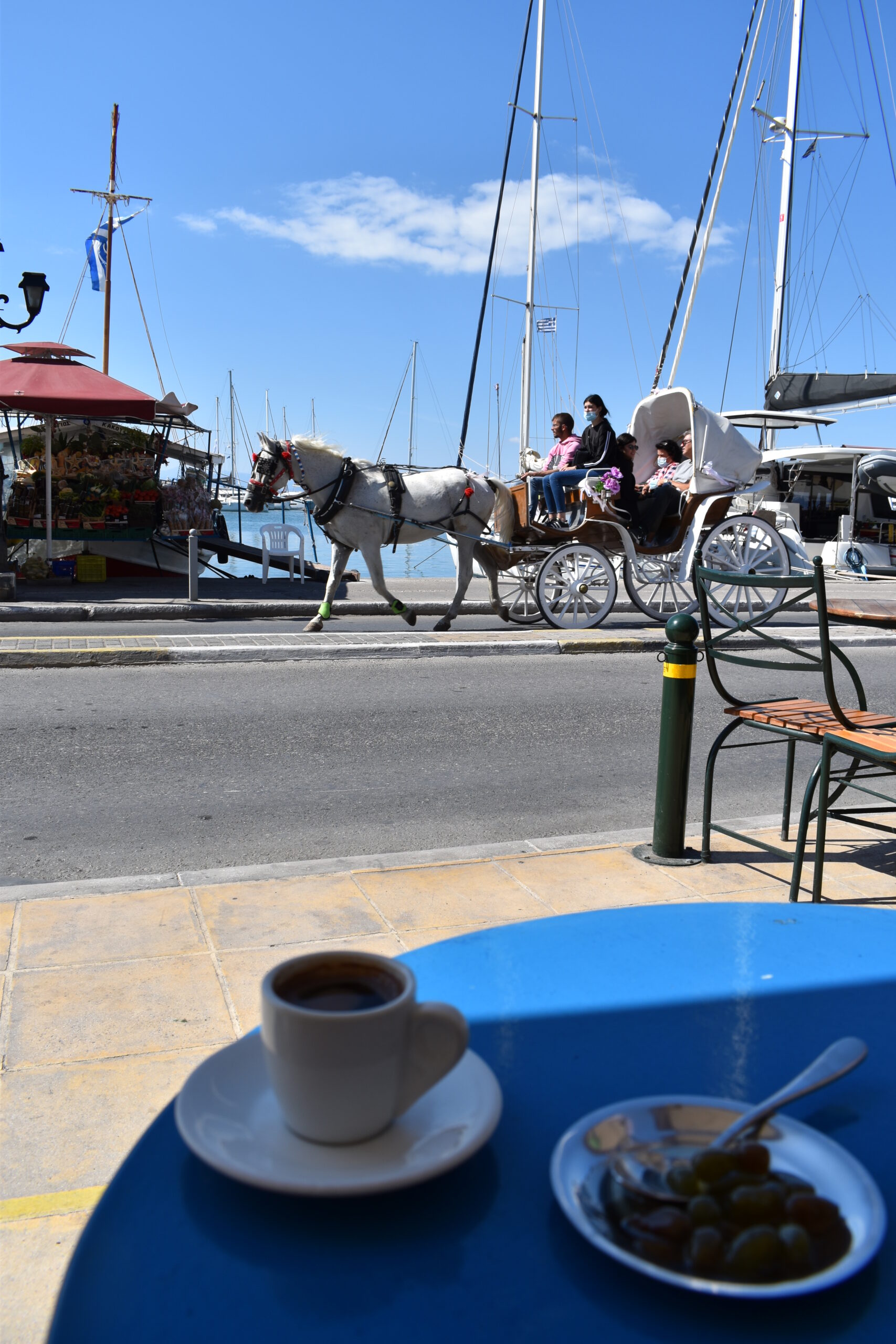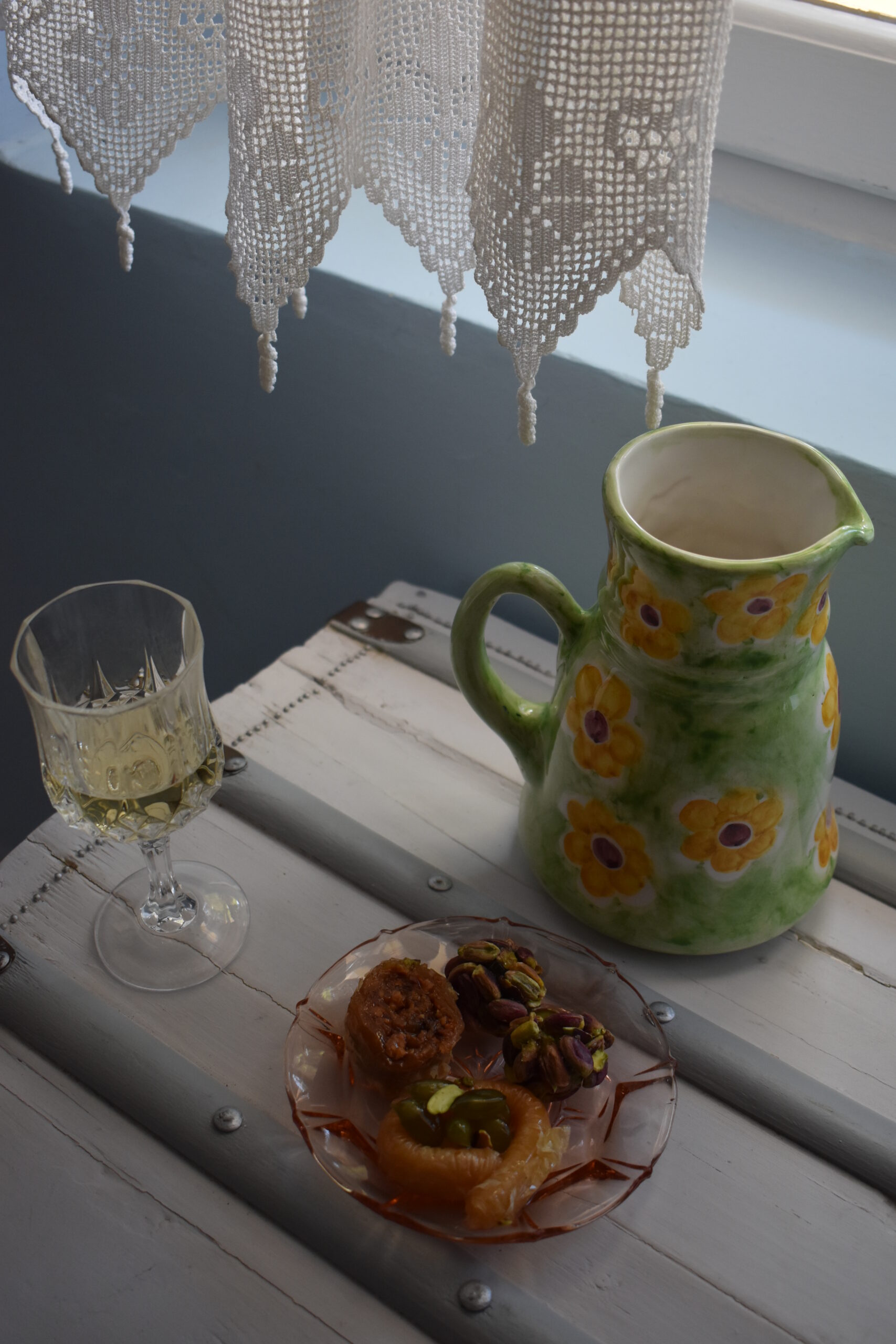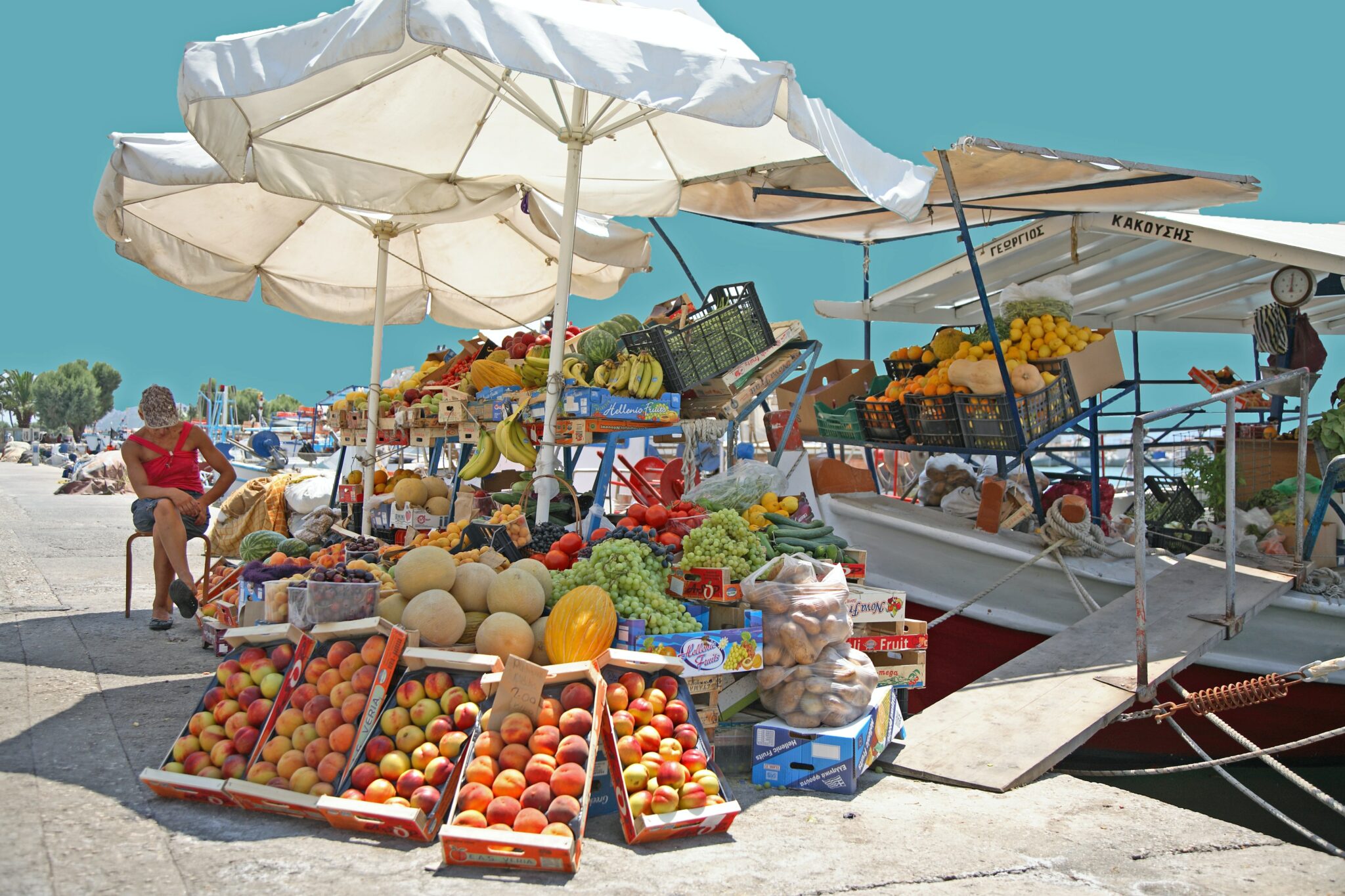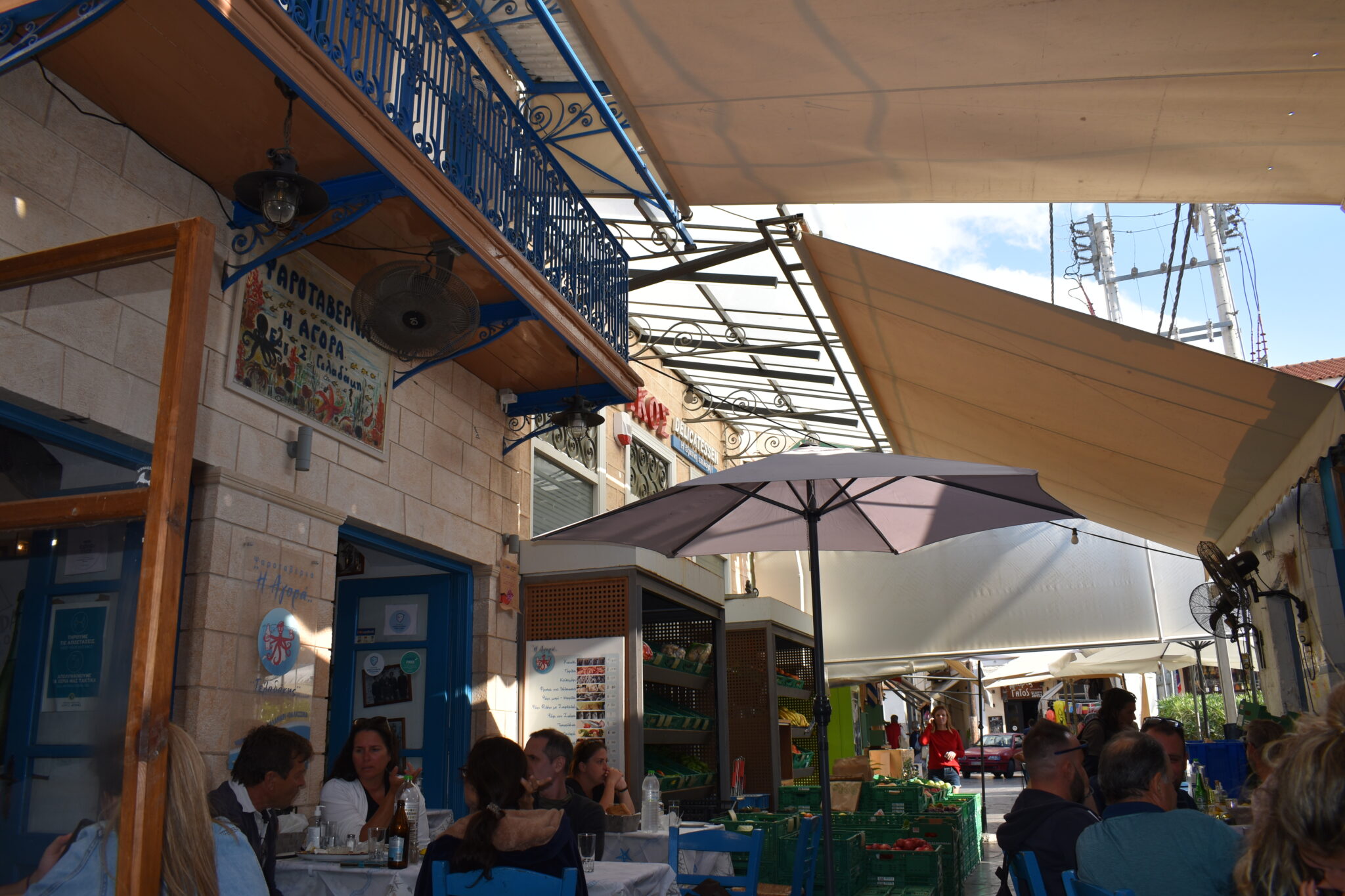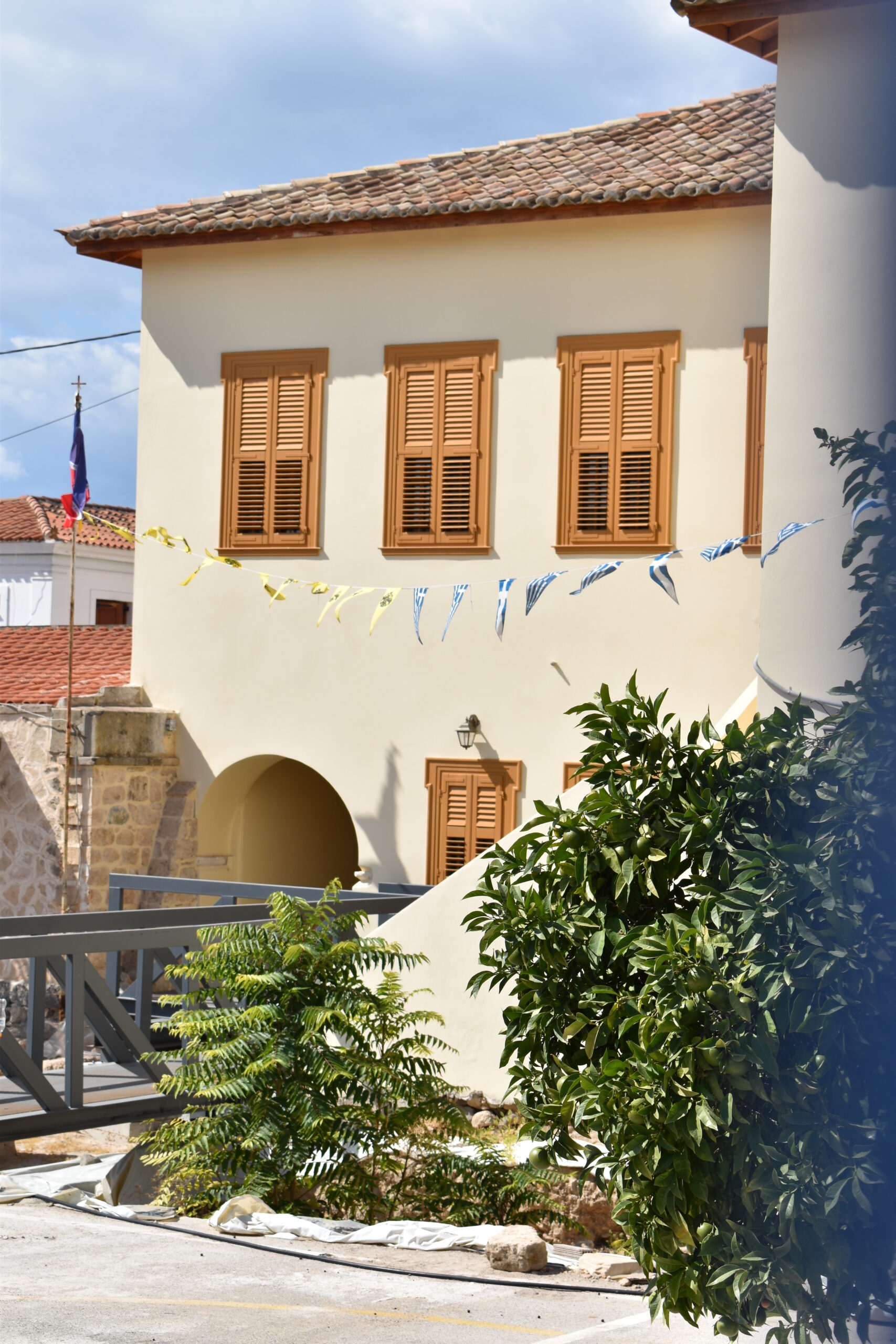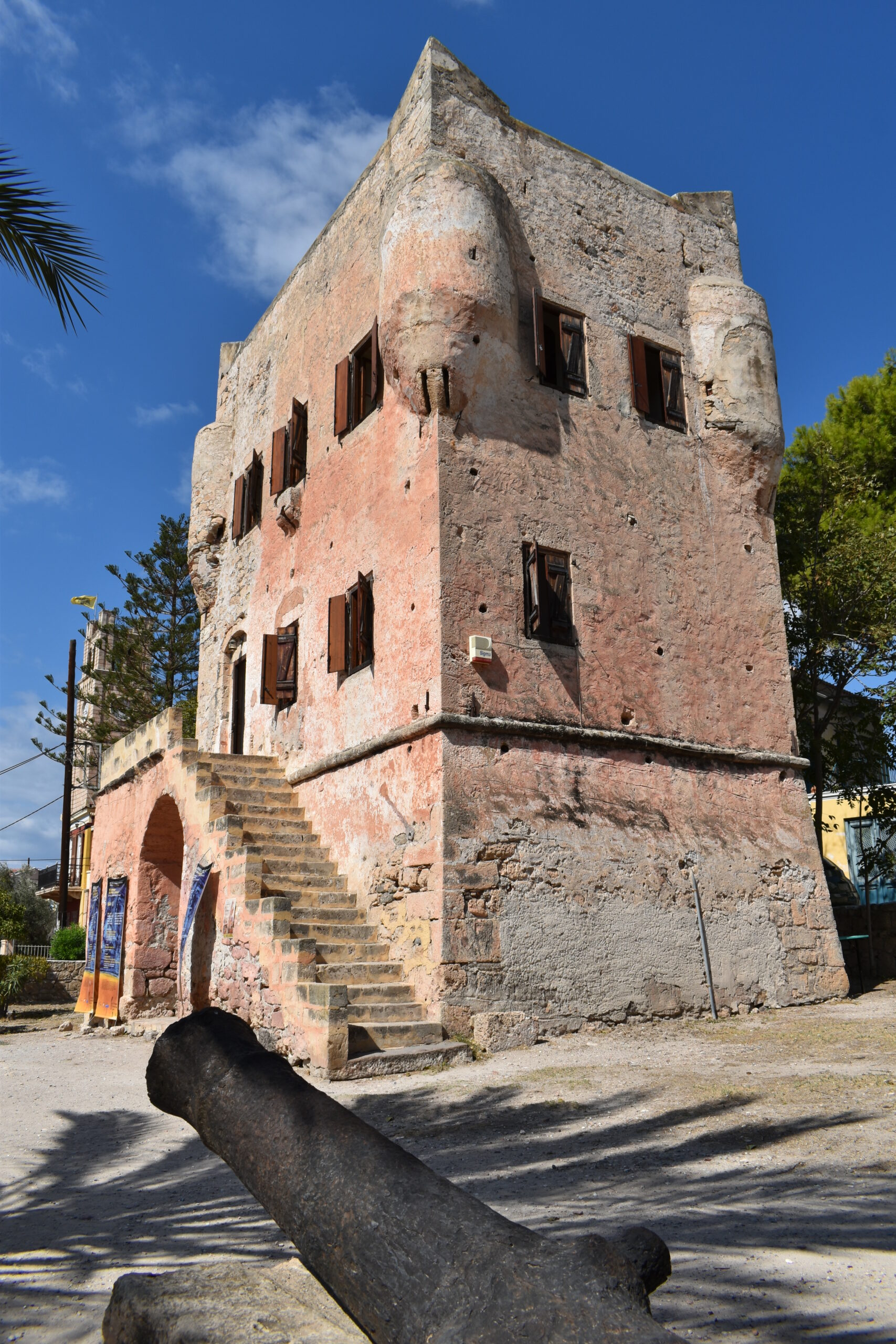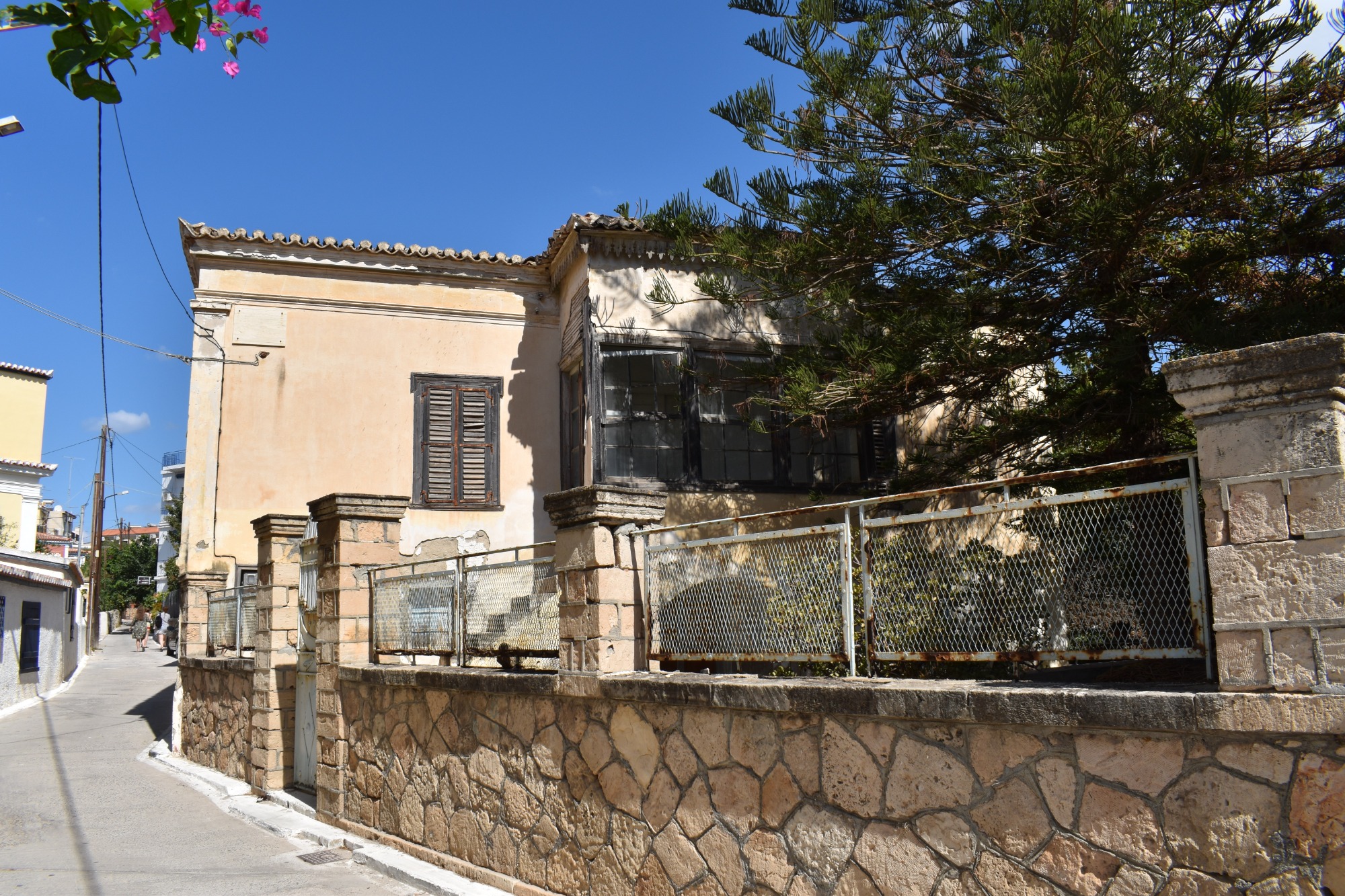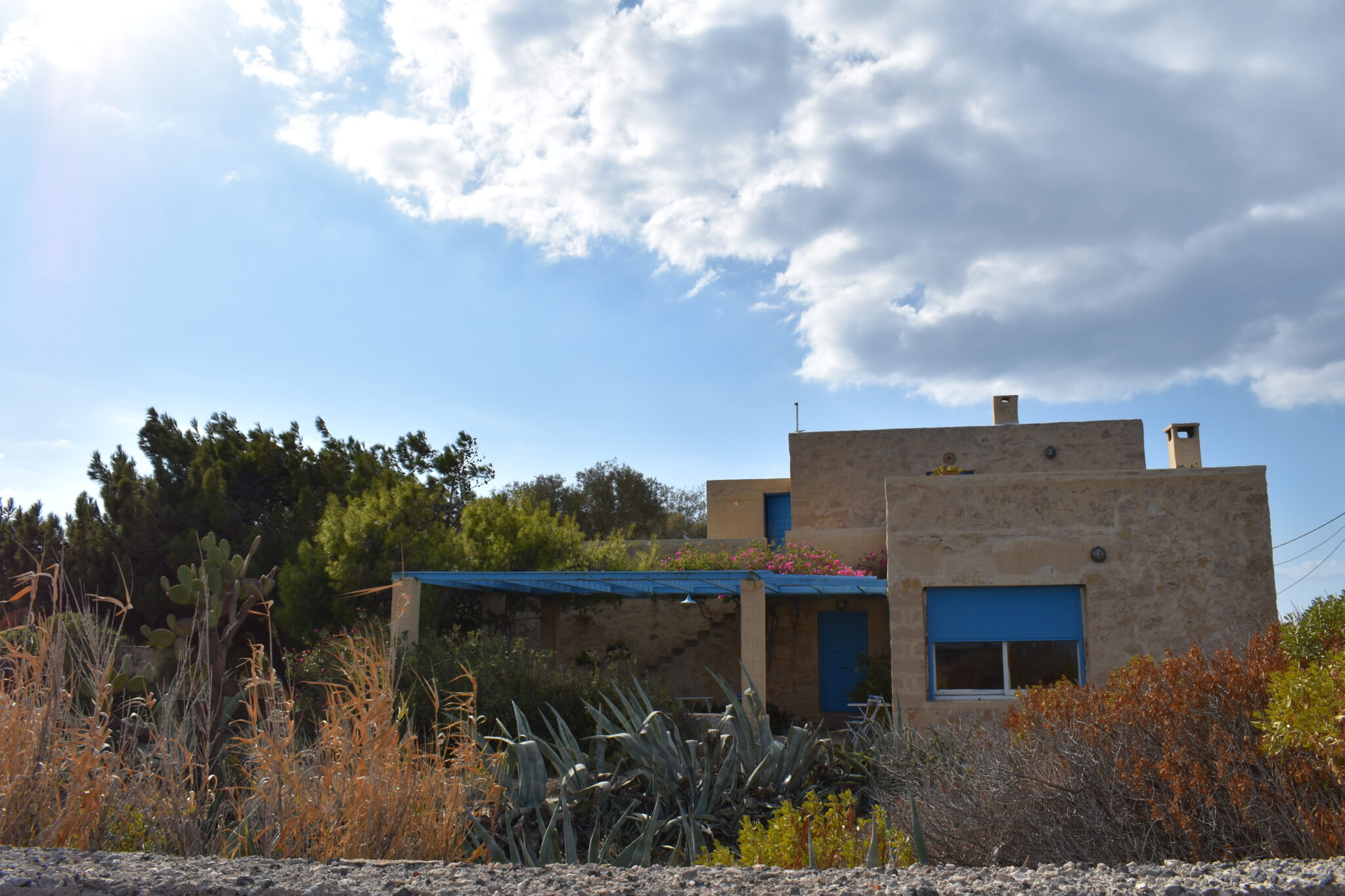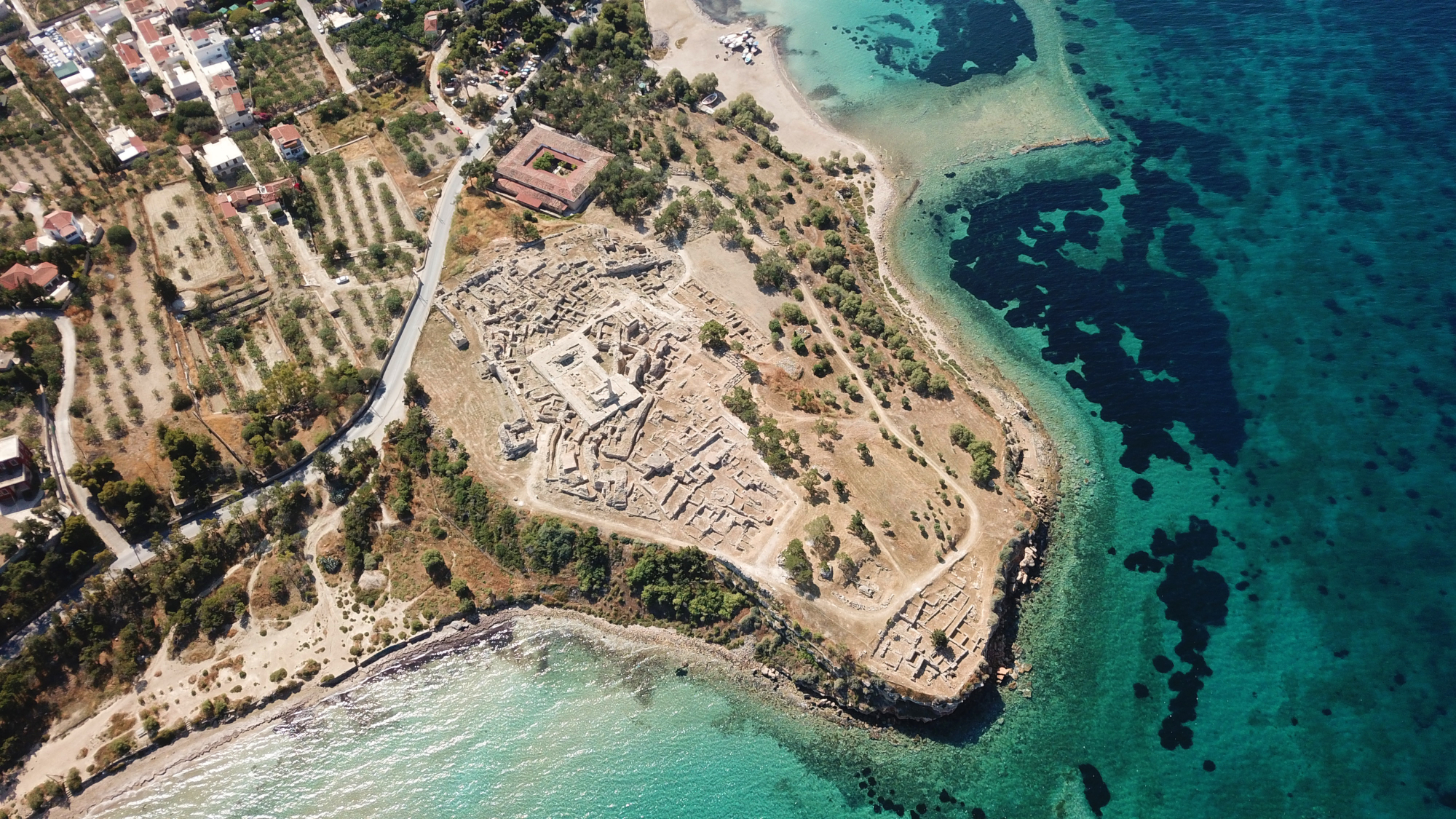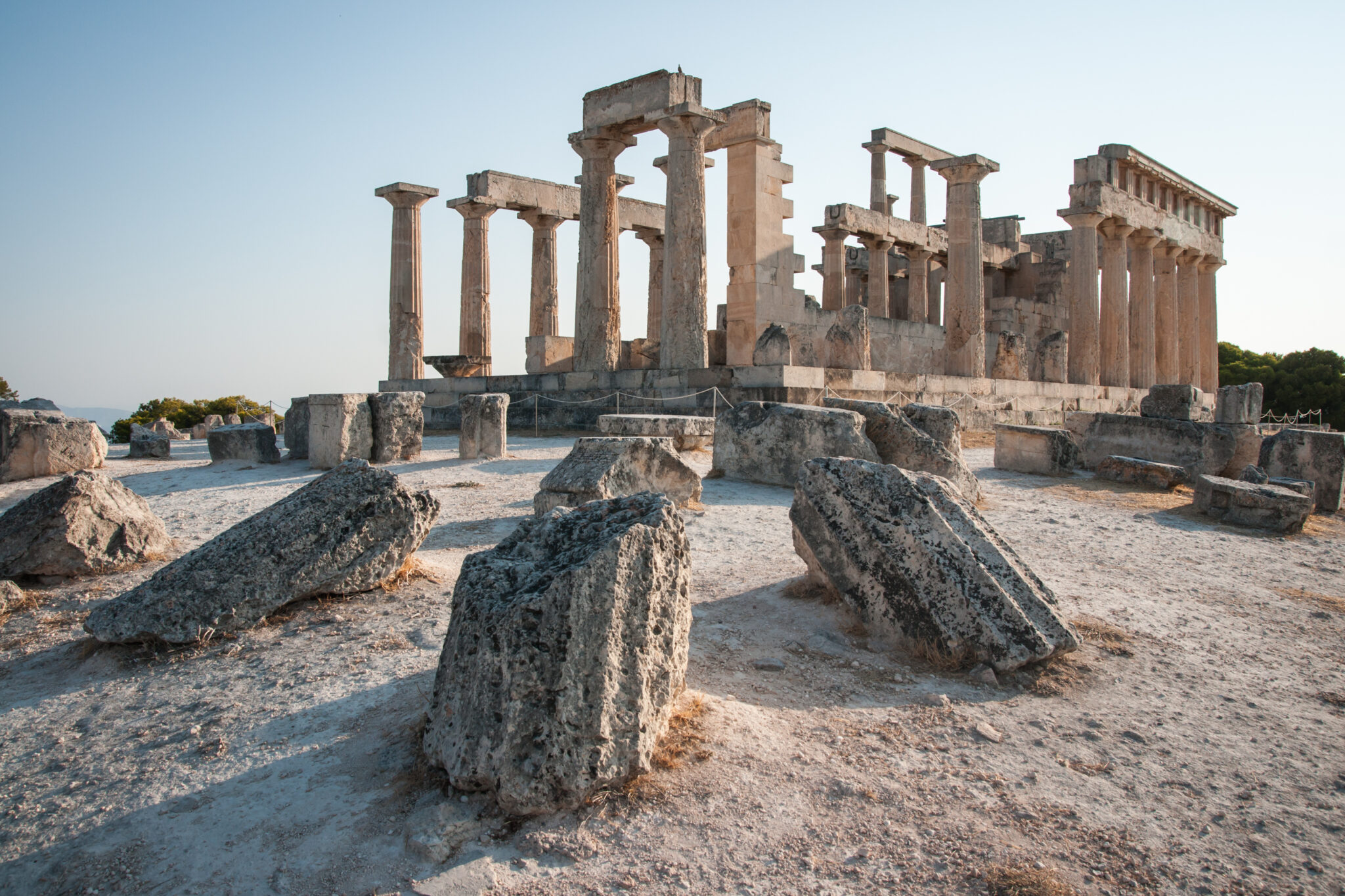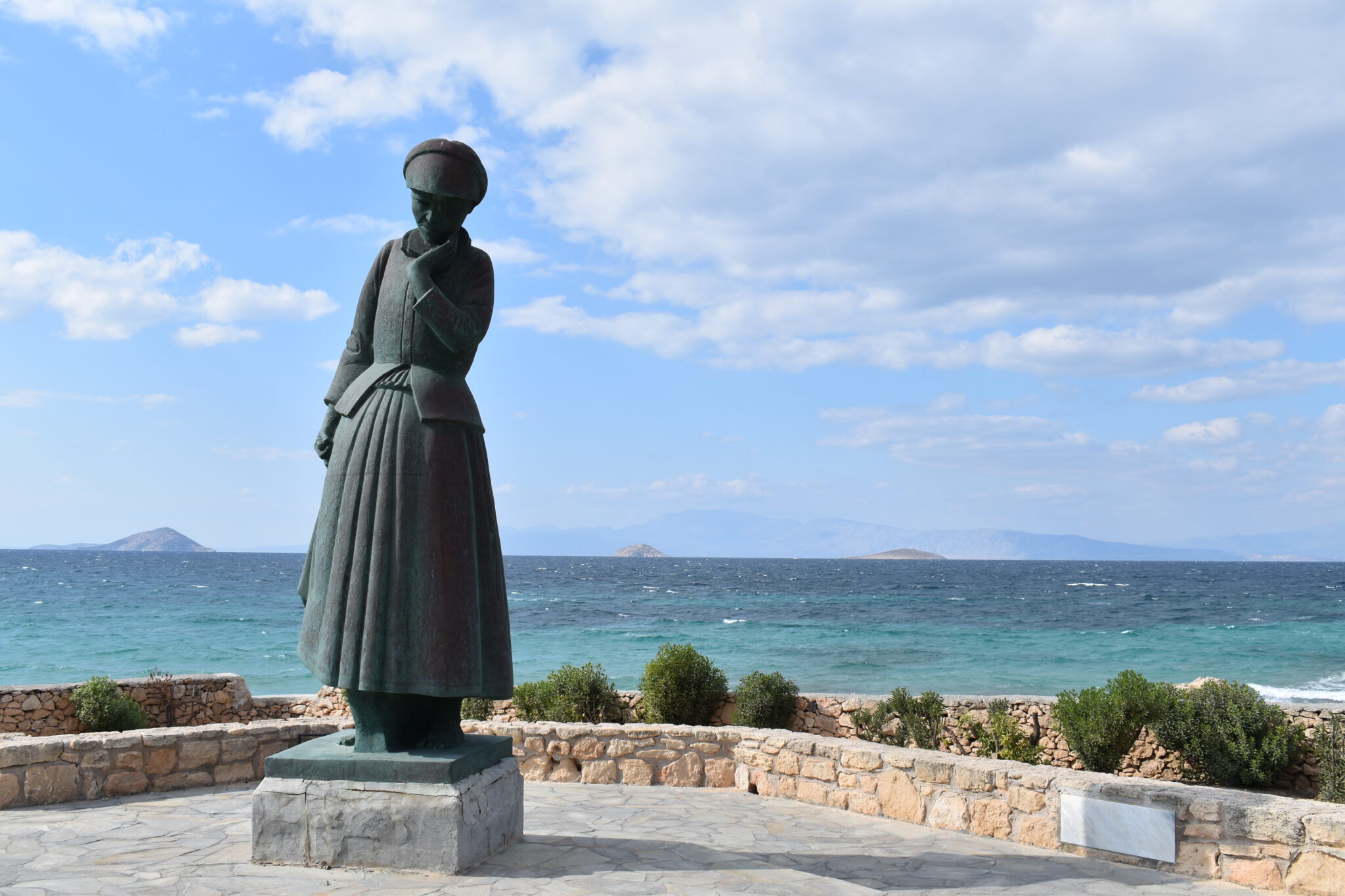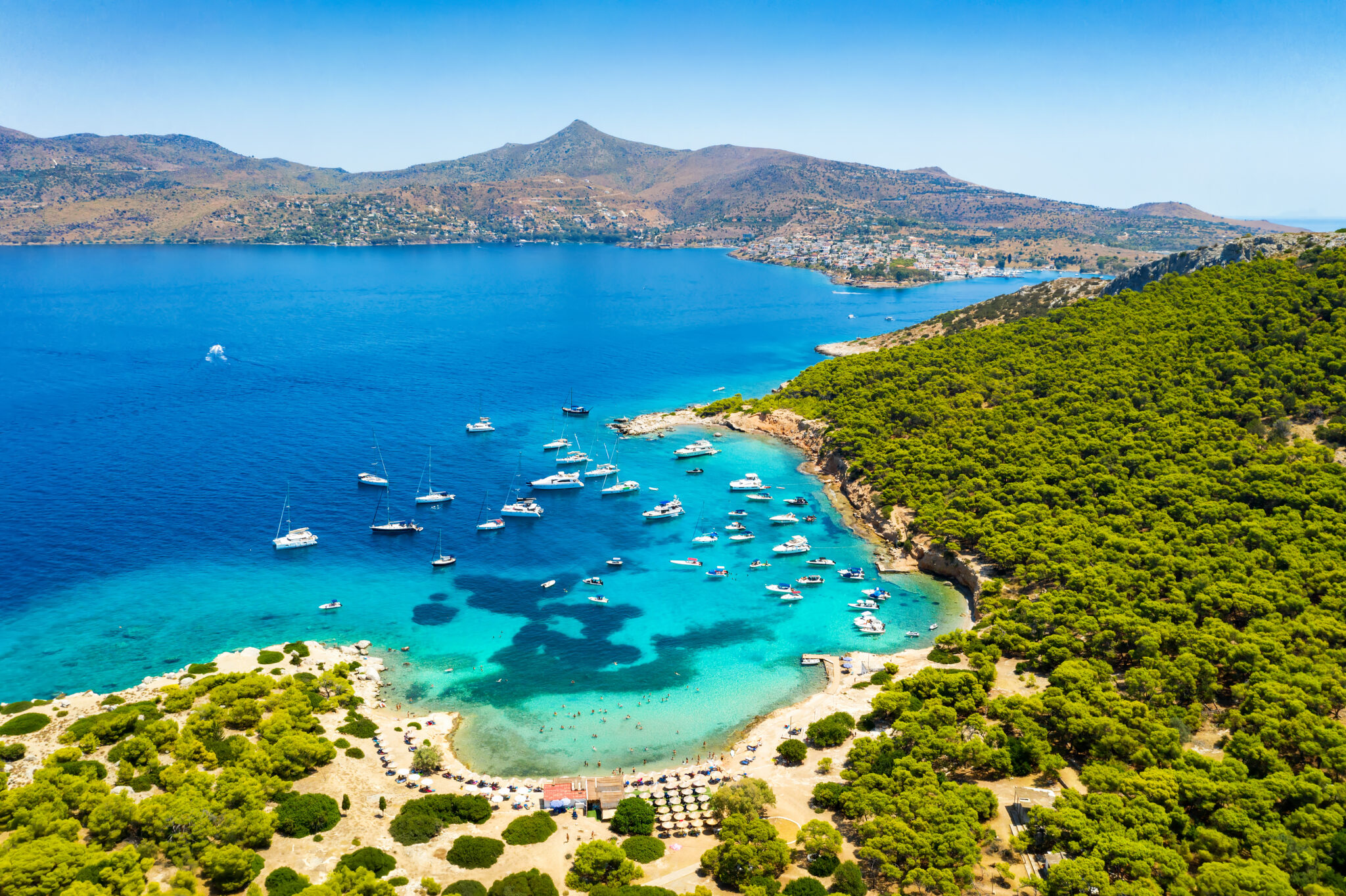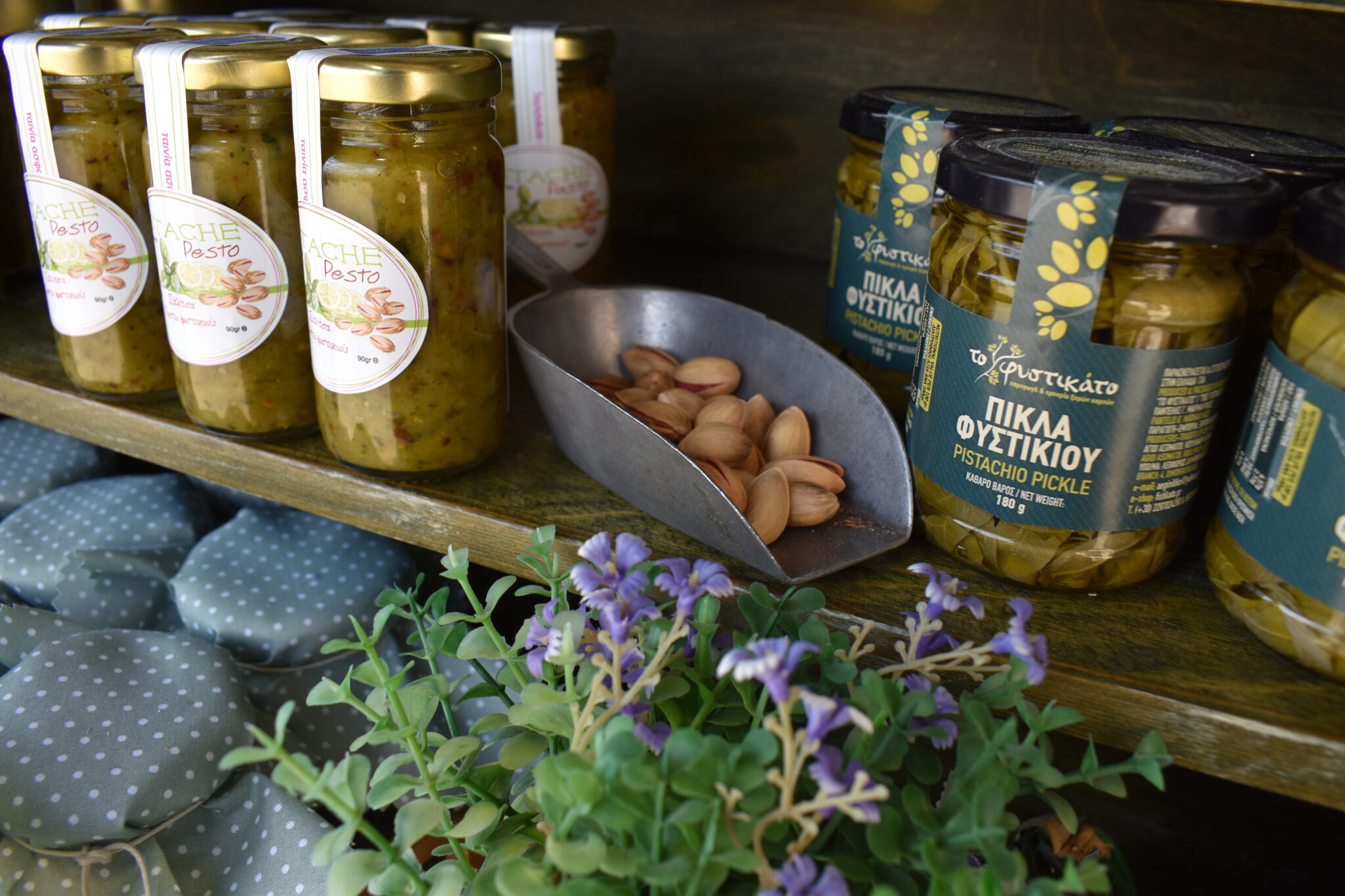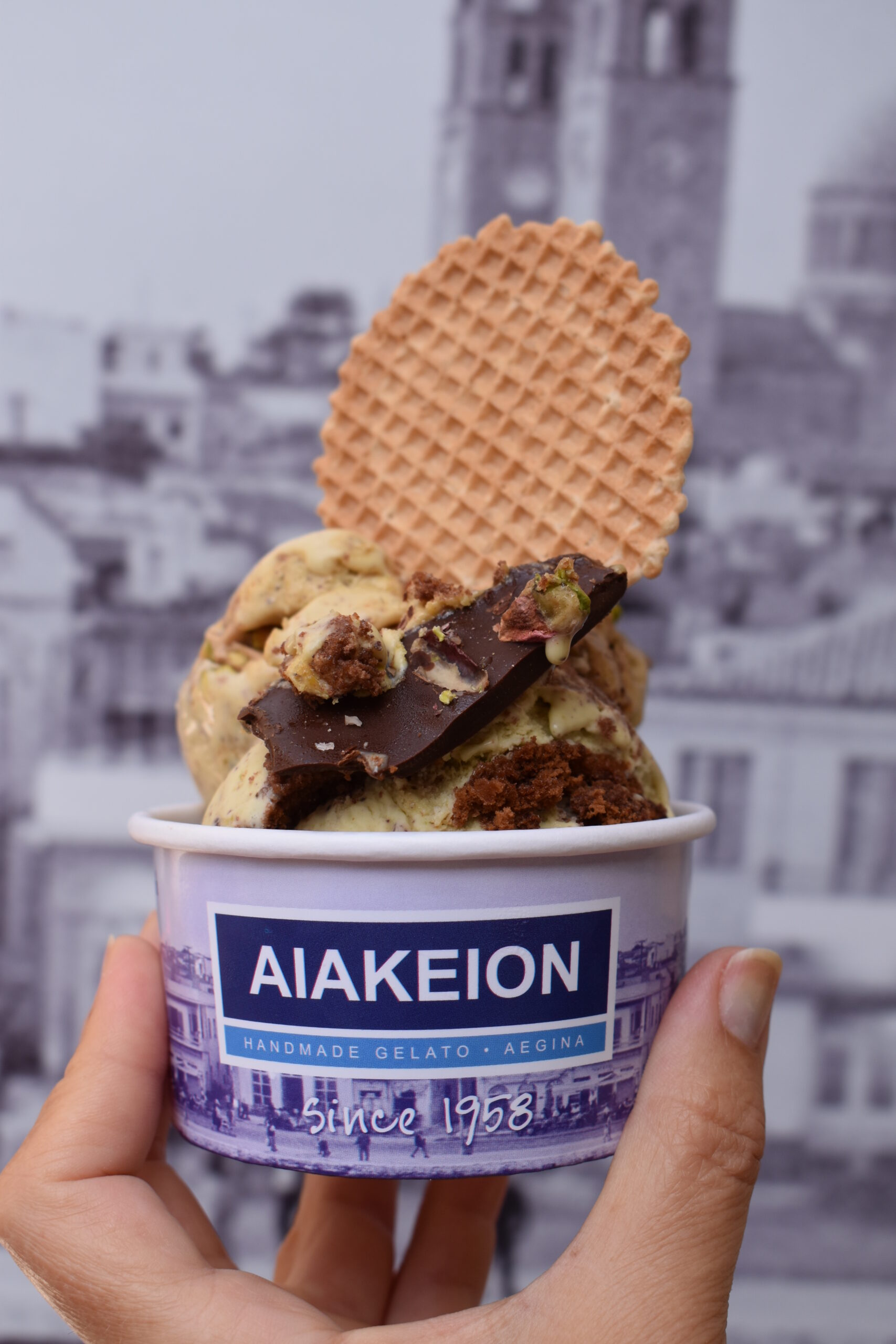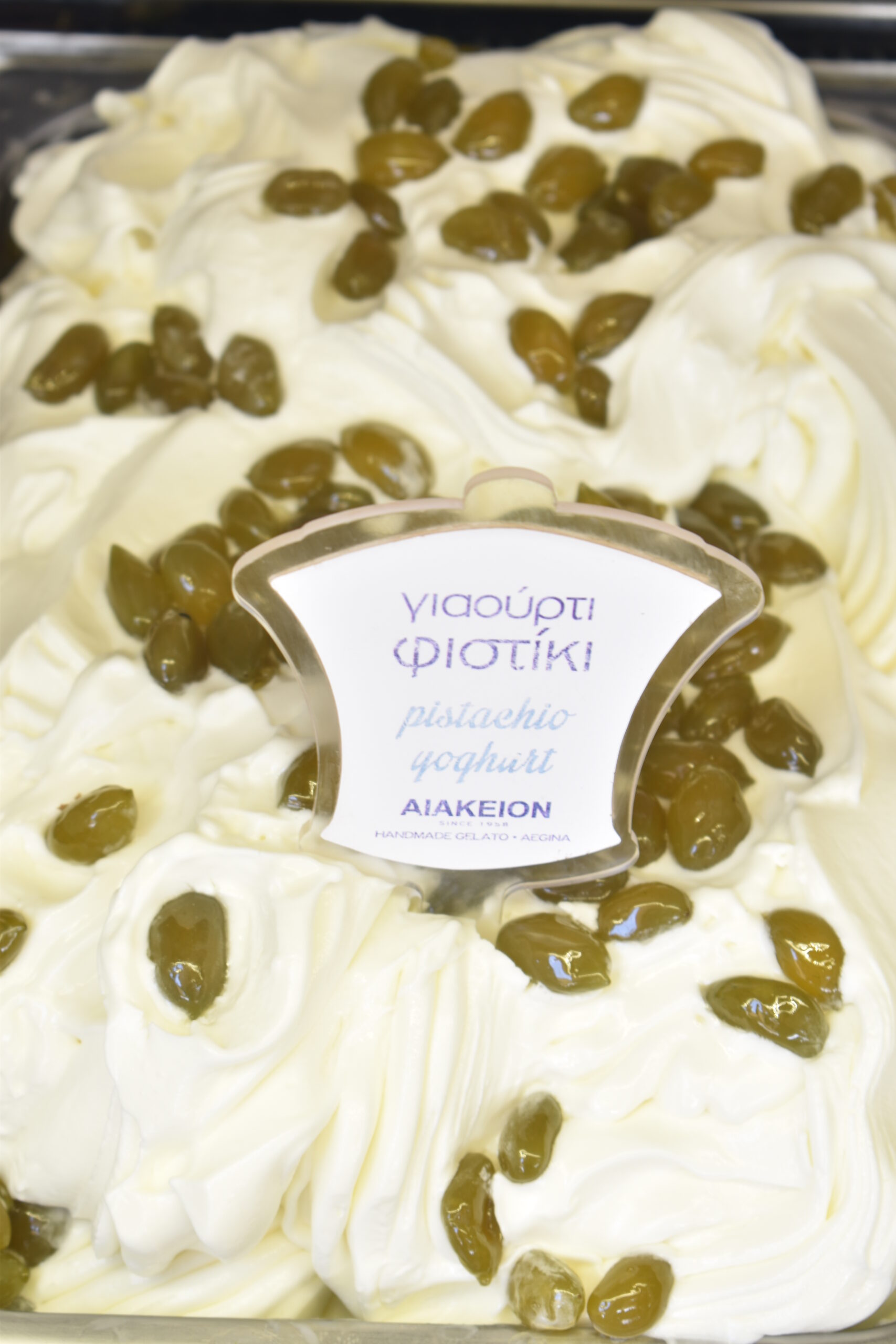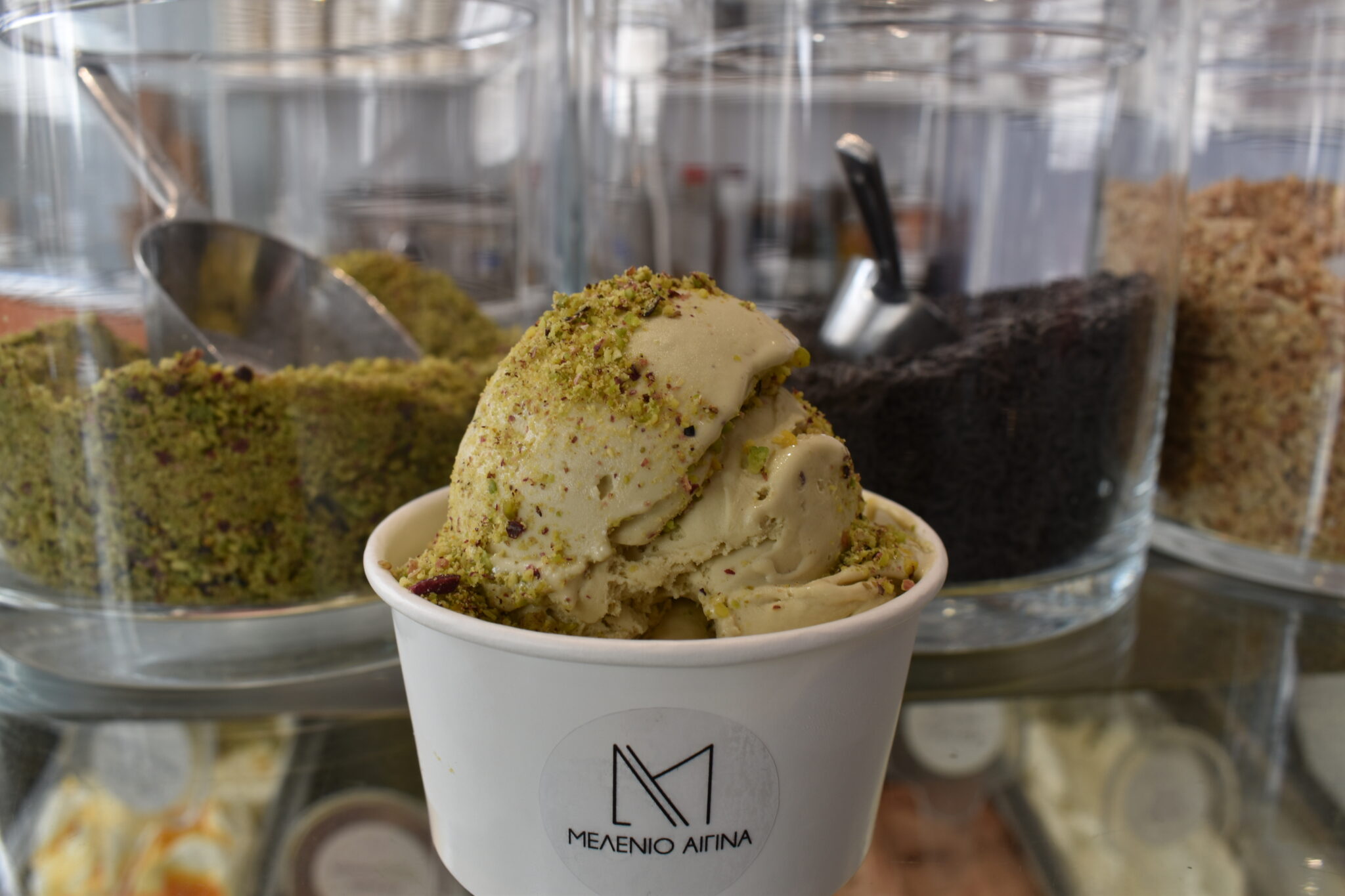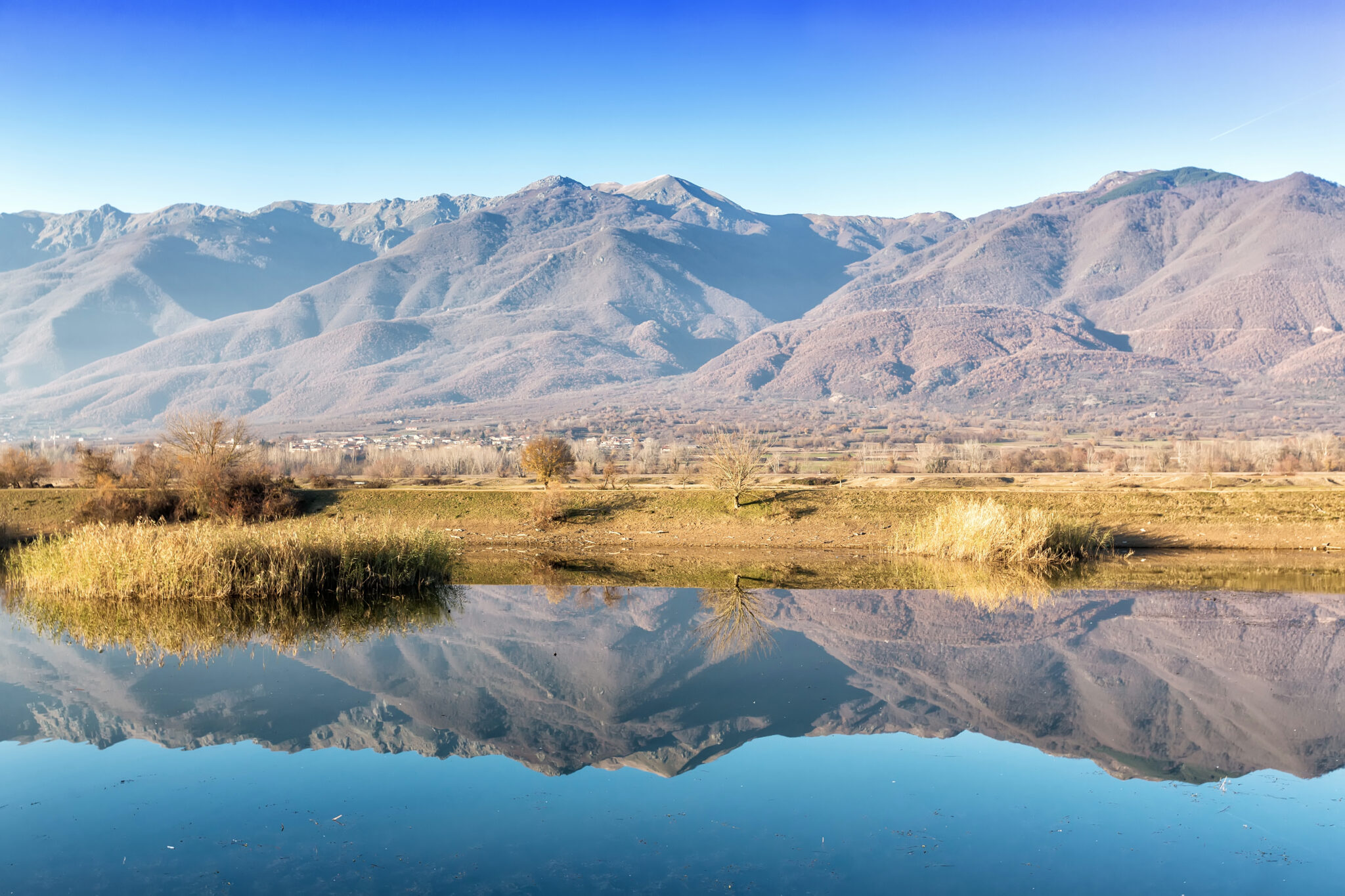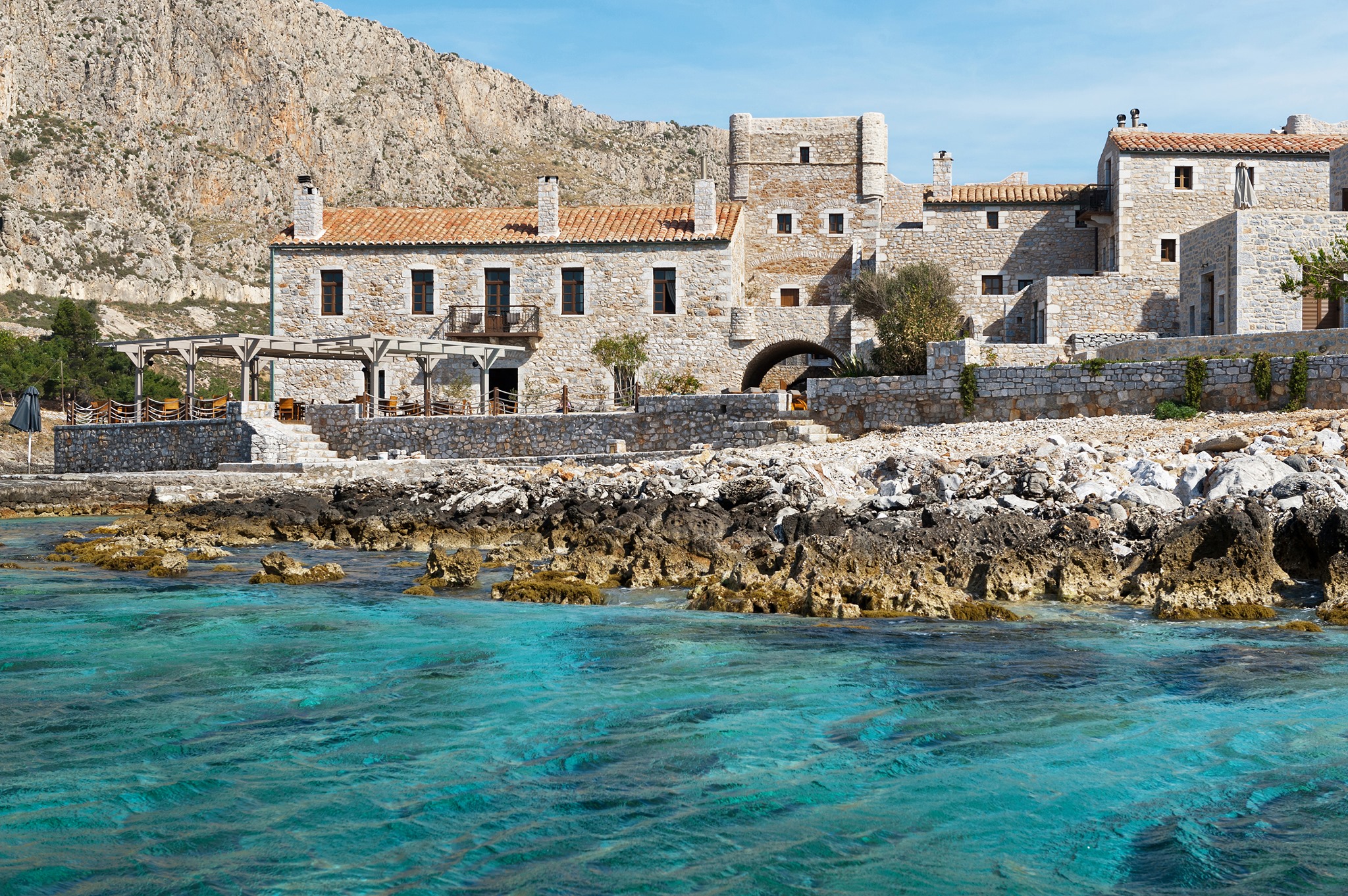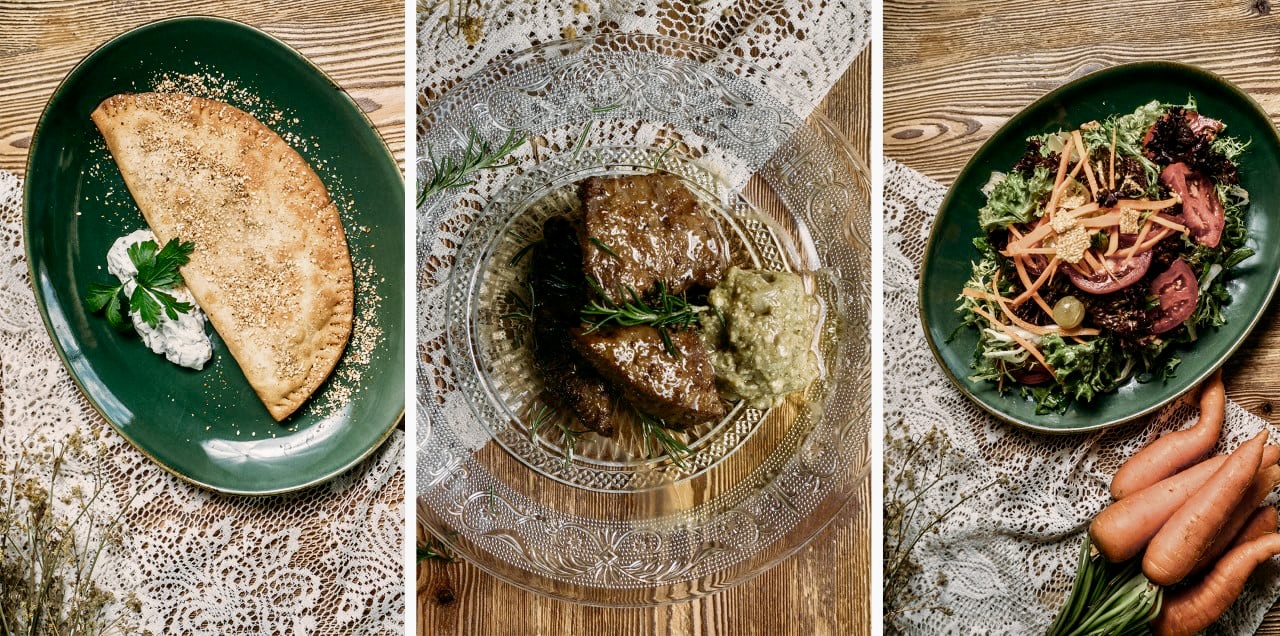It charmed Kostas Varnalis and inspired many of his poems, it won Nikos Kazantzakis over, who chose it as his place of residence, and it fuelled Christos Kapralos’ creativity who created some of his most important sculptures on the island which he also donated to the island. But, before all that, it was the place of worship of Apollo and of the goddess Aphaia, as well as the first capital of the Greek state when Ioannis Kapodistrias was in charge.
Beloved destination through the ages, easily accessible, it’s the ideal choice for a first taste of summer and a lovely spring weekend. Aegina is one of those destinations that immediately make you feel comfortable and make you always happy to be back. But even if one has visited many times, Aegina always has many hidden surprises for anyone who wants to really get to know the island.
From the harbour to the picturesque alleys
The tiny bright-white chapel of Agios Nikolaos welcomes you at the entrance of the harbour and the first image you see as you arrive on the boat is that of the beautiful neoclassical buildings that give colour to the town and recall its past glory. Enjoy a stroll on the pretty promenade where the colourful fish boats mingle with yachts and sailing boats and choose a historic kafenio (traditional coffee shop) to have your morning coffee. ‘Galaris’ and ‘Moiras’ stand side by side on the promenade and they’re very easy to spot, one is painted bright red and the other bright green.
Grab a table outside and accompany your coffee with a traditional pistachio spoon sweet while your eyes wander over the street vegetable stalls on the pier, with the sun sparkling on the waters of the Saronic Gulf. If you cross the fish market, almost next to the coffee shops, you’ll reach one of the prettiest pedestrian streets, Panagi Irioti. It’s full of little shops selling artefacts, nice souvenirs, ceramics, and folk-art objects, cafés, restaurants, and fish taverns and it crosses almost the whole town, running parallel to the seafront Dimokratias avenue.
Behind the fish market, at noon, it gets really crowded due to the delicious fish meze and the fresh fish that are masterfully prepared at the ‘Agora’ and ‘To Steki’ taverns. You must definitely enjoy a meal here, the vibe is vibrant, cheerful and laidback, and the place is full of locals, visitors and cats begging for a meze. Very close to the fish market, you’ll also find the great grocery store, ‘Mourtzis’, selling traditional sweets, including a great variety of pistachio-based sweets.
Chocolates, loukoumia (Turkish delights), pastelia (traditional sesame and honey bars) and bars are the perfect, tasty souvenirs, while you must try their traditional syrup desserts that come with a generous serving of pistachio. On the same street, the Neapolitan owner of “Tortuga Artcafè Wine Bar” manages to bridge the distance between the Gulf of Naples and the Saronic Gulf. In this nice corner shop, where works by young artists are often displayed you can have an authentic Neapolitan coffee with amazing tiramisu, or an aperitivo with bruschetta made with Greek and Italian ingredients. In the evening, there’s a selection of Italian wines and amazing pasta dishes, like the beetroot pesto with prosciutto and walnuts or the prosciutto tagliatelle with mushrooms and red wine.
The historic buildings and the houses of important people
In the two years of being the capital of the Greek state, Aegina became a blooming centre of financial, educational, trading and cultural activity. By looking for traces of that period on the listed buildings, you go back in time to the era when Aegina was the epicentre of political action of the newly founded Greece. Look for the Governor’s House, a large, spare building that was given to Kapodistrias to house the government’s administrative services and was also used as his office and residence while he was in Aegina. This is where the first decrees were signed, where the public services were organised, and where the first ministers were appointed. Nearby, you’ll find Einardeio, the first educational institution in Greece, serving one of Kapodistria’s main goals of fortifying the national identity through the establishment of an educational system for the new country. If you continue walking around the narrow alleys, near the harbour, you’re in for an interesting architectural surprise, in the form of a small, faded pink tower surrounded by palm trees and old canons. This is the Tower of Markellos, a 17th century watchtower, part of the town’s fortification, that was built during the second Venetian rule on the island, which during Kapodistrias’ time, housed minister offices and the state treasury.
One of the most heroic figures of the 1821 Revolution, Konstantinos Kanaris, lived in Aegina and his neoclassical residence, behind the Iroon Anexartisias square, stands deserted. The house were poet Kostas Varnalis lived in the 1930s, is in a great state, operating as a traditional guesthouse with the name Aeginitiko Arhontiko. The poet was charmed by the island’s beauties and was inspired by the summers he spent in Aegina, while his landlady, the most emancipated woman of Aegina at the time, is Zenobia, of the “Ballad of Antrikos”, the famous poem by Varnalis that was put to music by Mikis Theodorakis.
In the Plakakia area, just outside town, you’ll find the so-called “Koukouli” (cocoon in Greek), a beautiful summer house with unobstructed view of the sea, where Nikos Kazantzakis lived for over a decade, completing some of his greatest works there.
Important churches and Byzantine temples
The island is full of religious monuments, many of which also are of historical interest. For example, the town’s cathedral, built in 1806 in the town of Aegina, is the first cathedral of the free Greek state. This is where the welcoming ceremony of Kapodistrias took place, and where his government was sworn in. Inside the church, you can still see the Governor’s simple wooden pew, right across the despot’s throne.
The most famous church on the island is the church of Agios Nektarios, one of the largest churches in the Balkans. Together with the monastery of Agia Triada, next to it, that was built by Saint Nektarios, the island’s patron saint, where his relic is kept, it is an important religious monument and place of pilgrimage for thousands of Christians around the world. The area of Palaiochora, also known as “Mystras of the islands” is interesting in religious and historic terms, built on the fortified hill of the medieval Acropolis of Aegina. Starting in the 9th century it was the capital of the island for 10 centuries, protected from raids of Saracen pirates. Today, a stroll among the abandoned residences and the castle remains, reveals 36, of the original 365 in the area, small churches of the late and post Byzantine period, with noteworthy frescoes and architectural elements.
The archaeological sites open to visitors
The broken column that welcomes ships approaching the harbour is the only one remaining from the Doric temple honouring Apollo, in the north of the town and the harbour. The archaeological excavations in the area revealed that this strategic location was inhabited since the prehistoric times. Findings include fortification walls, foundations, and a cemetery, while the gold jewellery that were found in the area, unfortunately, are on display at the British Museum in London. The temple dates back to the 6th century BC and is a five-minute-walk from town. It’s worth climbing to “Kolona” as it’s called, for the stunning view and also for a visit to the archaeological museum located there. A sphinx dated to 460 BC, with a female head and a lion and eagle body, from the temple of Apollo, stands out from the museum’s large collection of ceramics and sculptures.
On the eastern side of the island, if you go up the gorgeous pine-covered hill, leaving the sandy beach of Agia Marina behind, you’ll feel awe upon reaching the most important archaeological site of Aegina, the temple of Aphaia. It’s built on the site of an older temple and was completed in 490 BC and is a magnificent architectural creation, so impressive in its time that it is said to have inspired the architects of the Parthenon. A Doric temple, which stands on a three-stepped crepis. There were 12 columns on the longer sides and 6 on the narrower sides, 24 of which are still in their original places. In contrast to what we see today, the upper part of the temple was decorated in vibrant colours, mostly red and black, while the sculpture of Aphaia, made of wood with marble limbs, was positioned in the cella. The Sanctuary of Aphaia museum is in the same location and it’s worth a visit to get a more complete idea about the temple’s history.
The interesting museums
A visit to the Historical and Folklore Museum of Aegina is a great way to get to know past eras through the carefully displayed exhibits. It’s housed in a neoclassical building dating to the time when Aegina was the capital of the Greek state, in the centre of town and it takes us back in time, giving a clear image of what life was like in Aegina 200 years ago. There is a reproduction of an urban “Aegenean house” on the first floor, that includes an office, a dining room, and a living room of an upper-class family. Clothes and traditional costumes, furniture and family portraits, knitting tools and elaborate lace bring the customs of the time to life. On the ground floor, there is a reproduction of a typical “Village house” through the presentation of everyday objects, farm and looming tools, showing life in the countryside. Finally, at the “Fisherman’s House” you can see a small collection of fishing tools and miniature models of different types of boats and caiques. The history of sponge fishing, and the photos of sponge divers of Aegina is particularly interesting.
Following the seaside route north west of town, and arriving at the Plakakia area, your eyes fall on a bronze statue of a female figure that, despite its gigantic dimensions, exudes warmth. It’s the Mother’s monument, a work by the renowned Greek modernist sculptor, Christos Kapralos, right across the house where he lived, and which has now been turned into a museum. In the main hall, wooden, plaster and bronze sculptures, as well as paintings by Kapralos are displayed. In a separate space, there’s a replica of one of his most famous works, the frieze he created for the Monument of the Battle of Pindos, that is on display at the Hellenic Parliament. The garden has been landscaped by the artist himself and is an open-air gallery that includes some of his marble sculptures, on display under the bright sun. If you’re in the area late in the afternoon you can enjoy a magical sunset next to the Mother’s sculpture.
Seaside villages and open landscapes
The scenic fish village Perdika, that brings Cycladic landscapes to mind, is an ideal destination for a spring stroll by the sea. Bright white roof-tiled houses with colourful shutters, and flowerpots in every corner, cats napping on the plastered steps, taverns serving fresh fish and a view of the bay and the verdant islet of Moni. Hop on a boat and in 10΄ you’ll be able to enjoy the pristine islet, inhabited by deer, peacocks and wild goats. In the centre of the island, a hike in the valley of Eleonas, a natural monument with century-old olive trees, is worth visiting. Those who like hiking and want to explore the island more, can follow one of the 9 marked trails of the Monopatia Politismou (cultural trails) programme (more info: http://www.monopatiapolitismou.gr/ και http://www.aegina.gr/).
Culinary explorations based on pistachio
It’s impossible to visit Aegina and not try its trademark product, the renowned pistachio from Aegina. Instead of sticking to the classic version of roasted pistachios, try other tempting pistachio-based delicacies. You can find a great selection of imaginative and creative flavours at the stalls of producers on the seaside street, across from the marina. They sell all sorts of goods, from pistachio butter, spreads with pistachio and praline or chocolate, bars, cookies and sugar or chocolate covered pistachios to pistachio spoon sweets, pistachio pesto, chutneys with pistachio and pistachio cream liquor.
You’ll also find great pistachio-based sweets and desserts at “Aiakeion”, a landmark café-patisserie on the island, open for more than six decades, with artfully created desserts and various versions of pistachio-based ice cream, like gourmet pistachio, as well as yogurt-flavoured ice cream with whole pistachios. Definitely visit patisserie ‘Melenio’ for a scoop of ice cream and make sure you ask for extra pistachio as a topping. You can also try their lovely cakes containing pistachio in various flavour combinations. The cake with the fragrant pistachio and fresh blackberry is very light and fruity and lifts the mood with its soft green colour. For savoury pistachio-based dishes, go to the restaurant Kappos, to try the recommendations by renowned chef Dimitris Kappos. There, you can try the al pesto pasta with pistachio substituting pine for this version of the famous Italian sauce. And if you think that you’ve had too many pistachios, remember you’re at the source of the best pistachios, and their nutritional value is an added bonus for your health.
Read also:
Hydra, Spetses, Poros: Island winter getaways close to the capital



